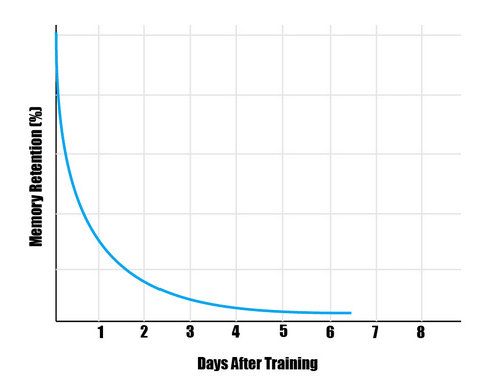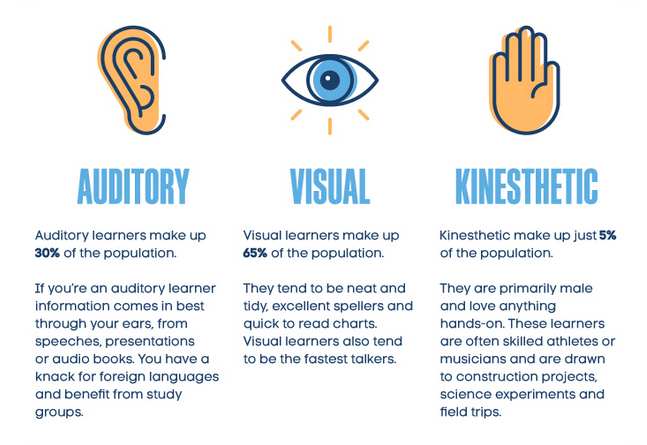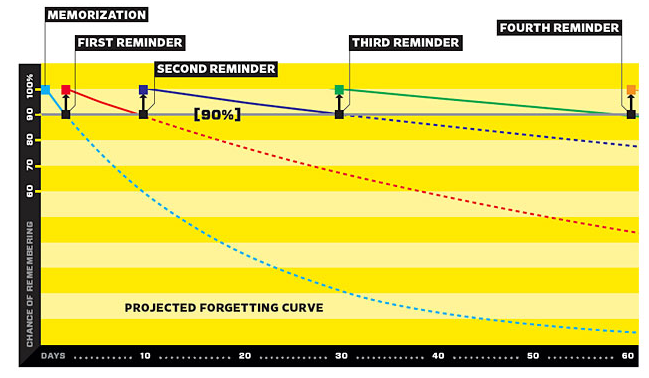The human brain processes 70,000 thoughts a day and could hold the equivalent of 2.5 million gigabytes of information comparatively as a computer. Despite the brain’s sheer power, memory loss is prevalent and can be measured in the form of a ‘forgetting curve’. Coined in 1885 by German psychologist Hermann Ebbinghaus, the forgetting curve refers to the natural state of information loss a person experiences, with a gradual decrease in knowledge retention over time.
.jpg?width=711&name=1200x627%20(4).jpg)

The forgetting curve is something educators, training professionals, and independent learners have always struggled with. The good news is that the human process of forgetting is natural and at the same time measurable. There are steps and procedures that can help train the brain to drive knowledge retention both in the short-term and long-term.
Factors That Influence the Forgetting Curve
Memory loss is influenced by a wide range of factors and can vary in severity from person to person. Common factors that influence retention and memory loss include:
- The depth and type of information that is being retained
- The process or method that was used to learn information
- Psychological factors such as sleep and energy levels
- Completely new information versus information being learned multiple times
- The mental representations the information triggers in the brain
As you can see, depending on the environment, content, and method, information retention can vary and be more or less severe. What has been proven, is the less we access a memory over time, the more it fades. This is known as decay. The more a thought or memory is accessed, the fresher it will be in the future.
Another critical factor to consider is the method or process something is taught and the environment it is taught in. It is estimated that 65% of people are visual learners, while the remainder are auditory and kinesthetic learners. Retention will likely improve if information is gathered through a person’s preferred learning style.
 Utilizing someone’s secondary learning style can lead to distraction and interference. Interference essentially impairs your ability to focus. If you learn something against your will in a noisy environment while being distracted, you are much more likely to experience memory loss than learning with your preferred method in a focused state of mind.
Utilizing someone’s secondary learning style can lead to distraction and interference. Interference essentially impairs your ability to focus. If you learn something against your will in a noisy environment while being distracted, you are much more likely to experience memory loss than learning with your preferred method in a focused state of mind.

Simple Ways to Increase Knowledge Retention
- The Use It or Lose It Approach
The “Use it or Lose It” theory states that memory loss can be combated by engaging your brain in activities and learning that promote retention and help combat declining cognitive ability. A study published in the American Medical Association found that participating in cognitively stimulating tasks reduces the risk of developing Alzheimer’s related symptoms.
This approach is simple and can be as easy as playing some of your favorite games. Sudoku, Chess, and Checkers represent a few popular and stimulating games that are considered “brain games” by psychologists and neurologists. Actively thinking and using your brain during gameplay keeps it sharp and supports the core notion of “Use it or Lose It”.
- Spaced Learning and Spaced Repetition
Spaced learning is a favorite topic of ours and for good reason – it works. Spaced learning, also called spaced education or spaced repetition, is a method of learning that involves breaking down and revisiting information over time, causing long-term retention to drastically improve.
The graph below provided by Gwern.net, shows just how effective spaced learning is. Each additional reminder to re-learn something drastically increases one’s chances of limiting the forgetting curve and memorizing something over a long-term period.

Harvard Magazine explained spaced learning is essentially the opposite of the “binge and purge” method of learning that students do shortly before tests. Binge and purge might work over the course of a few hours or days, but will eventually fall victim to the forgetting curve over time.
- Microlearning
Microlearning is a way of teaching and delivering content over short bursts that are essentially controlled by the learner. It is estimated the microlearning makes the transfer of learning 17% more efficient and creates 50% more engagement in the process.
One of the main reasons of microlearning’s success is that it targets the fleeting attention span of most learners in the connected world. In fact, in 2000 the average attention span was 12 seconds, dropping 33% to 8 seconds by 2013. Sadly, a gold fish has only a 9 second attention span.
The ability to actively target attention spans in highly-specific information blasts makes microlearning a perfect method to utilize with gamification and eLearning. Gamification uses technology to give learners maximum flexibility in how and when they want to learn, rewarding them for successful milestones along the way. Combined, these are both great ways to mix modern training and technology to help retain information.
- Utilize Technology: Mobile and eLearning
Modern technological change has led to a skills half-life of 2-5 years for most workers. This means workers are falling more and more behind due to a lack of training and skills to keep up with new advances. Thankfully, technology is also a great solution to this problem.
Traditional training and learning methods are becoming

largely obsolete and replaced with mobile applications that can keep up with quick industry changes. Additionally, these solutions offer
flexibility, content customization, organizational scaling, and mass customization that can help learners of all backgrounds and industries.
Currently, nearly 50% of all organizations use apps to train their workforce. When looking at user behavior this makes sense. The average person checks their phone over 200 times per day. Combining the methods above, mobile solutions can perfectly target a learner in their preferred channel to deliver quality content that can be absorbed multiple times, ultimately leading to greater retention and a solution to the average forgetting curve.




-1.jpg)
.jpg)

